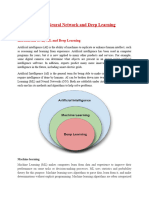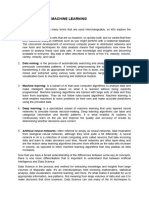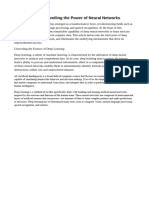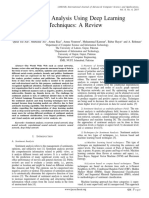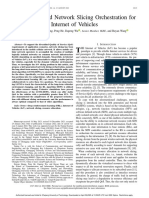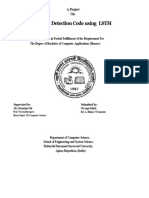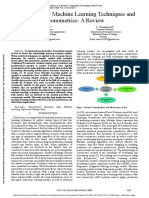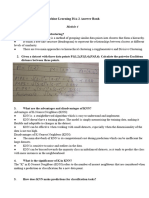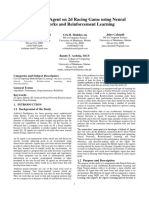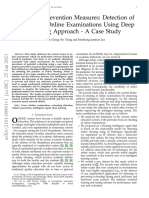Topic Title
Bachelor of Technology
Computer Science and Engineering (AIML)
Submitted By
NAME (ROLL NUMBER)
MARCH 2025
Techno Main
EM-4/1, Sector-V, Salt Lake
Kolkata- 700091
West Bengal
India
� TABLE OF CONTENTS
1. Abstract (50 words)
2. Introduction (200 words)
3. Context (500 words)
4. Conclusion (100 words)
5. References (Minimum 5)
Note:
1. Please use Times New Roman, 12 and Justified Alignment, Numbering should be Automatic.
2. Reference style should be following type (IEEE style):
a. F. Meng, H. Liu, Y. Liang, J. Tu and M. Liu, "Sample fusion network: An end-to-end data
augmentation network for skeleton-based human action recognition", IEEE Trans. Image Process.,
vol. 28, no. 11, pp. 5281-5295, Nov. 2019.
b. J. Gilmer, S. S. Schoenholz, P. F. Riley, O. Vinyals and G. E. Dahl, "Neural message passing for
quantum chemistry", Proc. Int. Conf. Mach. Learn. (ICML), pp. 1263-1272, 2017.
c. P. Bhandari. “Nominal data | Definition, examples, data collection & analysis.” Scribbr.
https://www.scribbr.com/statistics/nominal-data/ (accessed Aug. 11, 2022).
3. Your report will be checked under standard plagiarism guidelines.
4. No photo should be there in the report.
TMSL/CSE(AIML)/CA2/2024-28/Semester-2 2
�Neural Networks and Deep Learning
Abstract
Neural networks and deep learning have revolutionized artificial intelligence by enabling machines to
learn from vast datasets and perform complex tasks. This report discusses the foundations,
architectures, applications, and challenges of neural networks and deep learning, highlighting their role
in advancing computer vision, natural language processing, and real-world intelligent systems.
Introduction
Neural networks and deep learning represent a significant paradigm shift in the field of artificial
intelligence (AI). Inspired by the structure and function of the human brain, artificial neural networks
(ANNs) aim to replicate the ability of biological neurons to process information and learn patterns. Over
the past few decades, the advancement of computing power, the availability of large-scale data, and
innovations in algorithms have accelerated the growth of deep learning, which uses multiple hidden
layers to capture intricate data representations.
The importance of deep learning lies in its ability to achieve state-of-the-art performance across diverse
domains such as image recognition, speech processing, and natural language understanding. Unlike
traditional machine learning techniques, deep learning models can automatically extract hierarchical
features, reducing the reliance on manual feature engineering.
This report presents an overview of neural networks and deep learning concepts, architectures like
Convolutional Neural Networks (CNNs) and Recurrent Neural Networks (RNNs), applications in real-
world problem solving, and the challenges that accompany their deployment. By bridging theory with
practice, neural networks and deep learning provide a pathway for building intelligent systems that
continue to transform industries, research, and daily life.
Context
Neural networks form the backbone of deep learning, which has emerged as a dominant subfield of
artificial intelligence. At their core, neural networks are computational models consisting of
interconnected nodes, or 'neurons,' organized into layers. Each neuron processes inputs using activation
functions and propagates information through weighted connections. Deep learning extends this idea by
adding multiple hidden layers, allowing the network to capture abstract and hierarchical data features.
TMSL/CSE(AIML)/CA2/2024-28/Semester-2 3
�**Key Architectures**
One of the most influential architectures is the Convolutional Neural Network (CNN), designed for image
and video analysis. CNNs apply convolutional filters to automatically detect features like edges, shapes,
and textures, enabling accurate classification and object recognition. Another vital architecture is the
Recurrent Neural Network (RNN) and its advanced variant Long Short-Term Memory (LSTM), which are
specialized for sequential data such as text, speech, and time series. LSTMs address the vanishing
gradient problem, making them effective for long-term dependency modeling. Additionally,
Transformer-based models, such as BERT and GPT, have redefined natural language processing by
leveraging self-attention mechanisms.
**Applications**
Deep learning is applied in numerous areas. In computer vision, it powers face recognition, autonomous
driving, and medical image analysis. In natural language processing (NLP), models enable machine
translation, chatbots, and sentiment analysis. In healthcare, deep learning assists in disease prediction
and drug discovery. In finance, it supports fraud detection and algorithmic trading. Moreover, deep
learning fuels innovations in robotics, speech recognition, and recommendation systems.
**Challenges**
Despite its success, deep learning faces challenges. Training deep models requires enormous datasets
and computational resources, raising concerns about scalability and environmental impact. Overfitting
remains a persistent issue, requiring techniques such as dropout and regularization. Interpretability of
neural networks also poses a challenge, as models often behave like 'black boxes,' making it difficult to
explain their decisions. Ethical concerns, including bias in data and potential misuse of AI systems,
highlight the need for responsible deployment.
**Future Directions**
Research continues to focus on developing more efficient architectures, such as lightweight networks
for edge devices, and enhancing explainability through interpretable AI models. Integration with other
fields like reinforcement learning, neuroscience, and quantum computing may further expand the scope
of neural networks and deep learning.
Thus, the field remains dynamic, with innovations shaping the way intelligent systems are designed and
deployed across domains.
Conclusion
Neural networks and deep learning have become indispensable in modern artificial intelligence,
enabling breakthroughs across industries. By leveraging architectures like CNNs, RNNs, and
Transformers, deep learning models demonstrate remarkable performance in tasks ranging from image
classification to natural language understanding. However, challenges such as data dependency,
computational cost, and interpretability must be addressed to ensure sustainable and ethical adoption.
TMSL/CSE(AIML)/CA2/2024-28/Semester-2 4
�As research progresses, the future of deep learning promises even more impactful applications, bridging
human intelligence and machine capability to build innovative systems that can solve complex global
problems with efficiency and precision.
References
[1] Y. LeCun, Y. Bengio and G. Hinton, "Deep learning," Nature, vol. 521, pp. 436–444, 2015.
[2] S. Hochreiter and J. Schmidhuber, "Long short-term memory," Neural Computation, vol. 9, no. 8, pp.
1735–1780, 1997.
[3] A. Vaswani et al., "Attention is all you need," Advances in Neural Information Processing Systems
(NeurIPS), pp. 5998–6008, 2017.
[4] I. Goodfellow, Y. Bengio, and A. Courville, Deep Learning, MIT Press, 2016.
[5] K. He, X. Zhang, S. Ren and J. Sun, "Deep residual learning for image recognition," Proc. IEEE Conf.
Comput. Vis. Pattern Recognit. (CVPR), pp. 770–778, 2016.
TMSL/CSE(AIML)/CA2/2024-28/Semester-2 5

























